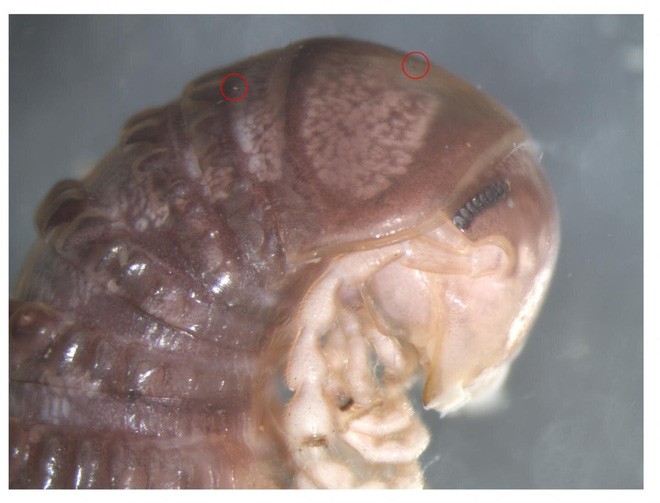Only from a photo on Twitter, scientists discovered a completely new type of parasite
We use social media to entertain and communicate with friends. You might not expect this platform to be a tool to support scientific research: a team of experts from the Danish Museum of Natural History at the University of Copenhagen has discovered a complete parasitic fungus. brand new through a picture posted on Twitter.
The beginning of this discovery was the social networking habit of biologist Ana Sofia Reboleira working at the Danish Museum of Natural History; Her Twitter surfing finger stopped at a weird photo. Her partner at Virginia Tech, Derek Hennen, shared the photo showing a North American rolling book with strange white spots on its body. Tiny details do not cross the professional eye of Miss Reboleira.
' I can see something like a mushroom appear on the surface of the roller. Prior to this time, these fungi had never appeared in the North American species. I brought this picture to my partner. That was when we ran down to the museum's database and started searching , 'recalls Ana Sofia Reboleira.

The red circle circling the two dots appears on the Cambala matriarch, two never-before-recorded scientific parasites.
She and researcher Henrik Enghoff have discovered many other mushroom specimens of the same species as the newly discovered creature, also appearing on several North American rollers included in the collection of organisms at the Museum; This mushroom has never appeared in any text. This confirms the existence of the fungus of the Laboulbeniales - a small, strange, unspecified parasite, which prefers insects.
The researchers named the newly discovered organism Troglomyces twitteri.
Ana Sofia Reboleira said the new discovery is an example of how sharing information on social media can lead to unexpected events.
' As far as I know, this is the first time that science has discovered a new species on Twitter. It shows the importance of these platforms in sharing research - and thereby achieving new results . ' Ms. Reboleira believes that social media in general is playing a big role in research, and also emphasizes the importance of the huge collection of creatures at the Danish Museum of Natural History that helped her succeed. .
Science does not know much about the fungi Laboulbeniales; We are new or they look like small larvae, this fungus is special because they grow outside the host, as in the case of Troglomyces twitteri, they grow on the genitals of the iris.
Ms. Reboleira believes that mushrooms will not only give us knowledge about hosts that are insects, but also the mechanisms behind the parasitic ability of the organism. She hopes the new research will bring in useful knowledge related to other parasitic organisms that can be harmful to humans.
You should read it
- The parasite eats, sleeps, mates and dies on the face of humans
- How to make an eye mask in a strange 'parasite'
- Instructions for using Twitter for new users
- Tricks or certain Twitter users should not be ignored
- 13 useful shortcuts that Twitter users need to know
- Twitter has a problem, many users cannot login
 US declines more information about UFO: The size of a suitcase, with the speed that makes the world's fastest fighter have to smell
US declines more information about UFO: The size of a suitcase, with the speed that makes the world's fastest fighter have to smell New research shows that North America's 'cousin' of Velociraptor originated from Asia
New research shows that North America's 'cousin' of Velociraptor originated from Asia Why do whale fin fins have five fingers that look like human hands?
Why do whale fin fins have five fingers that look like human hands? The giant structure was discovered from mammoth bones 25,000 years ago
The giant structure was discovered from mammoth bones 25,000 years ago Three-man chess: crazy game as the name implies
Three-man chess: crazy game as the name implies On 5/5/1110, the Moon mysteriously disappeared
On 5/5/1110, the Moon mysteriously disappeared